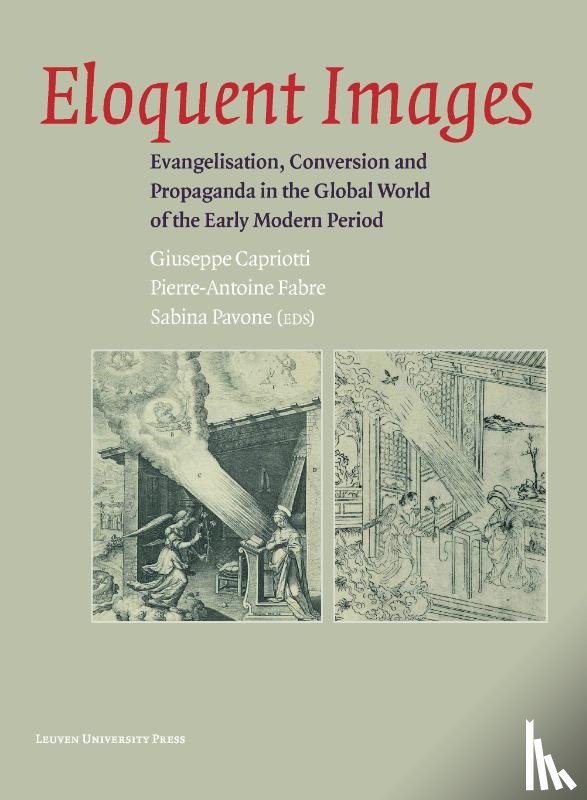Omschrijving
The Christian image in the process of modern globalisation Drawing on original research covering different periods and spaces, this book sets out to appreciate the specific place of images in the history of evangelisation in the long modern period. How can we reconceptualise the functions of the visual mediation of the gospel message, both in terms of the production and reception of this message and in terms of its effective mediators, artists, religious, and cultural ambassadors? The contributions in this book offer multiple geographical and historical insights regarding the circulation of the image on the global scale of the Christianised world or the world in the process of being Christianised, from China to Iberia. Combining the contribution of historians and art historians, the authors highlight the points of intercultural encounter and tension around preaching, catechesis, devotional practices, and the propagandistic use of images.Through its aesthetic and social study of the image, and by examining the inner and outer borders of Europe and the mission lands, Eloquent Images contributes significantly to the history of evangelisation, one of the major dynamics of the first European globalisation.Giuseppe Capriotti is professor in early modern art history at the University of Macerata.Pierre-Antoine Fabre is professor at the Ecole des hautes études en sciences sociales (EHESS) in Paris, and studies modern Catholicism and evangelization.Sabina Pavone is professor of early modern history and global history at the University of Macerata.Overcoming the traditional incommunicability between historians and art historians, the authors of the essays in the book work together by "questioning" the images involved in religious propaganda from a global viewpoint. In doing so, they offer new insights from an empirical perspective.Ivana Čapeta Rakić, University of Split Drawing on original research covering different periods and spaces, this book sets out to appreciate the specific place of images in the history of evangelisation in the long modern period. How can we reconceptualise the functions of the visual mediation of the gospel message, both in terms of the production and reception of this message and in terms of its effective mediators, artists, religious, and cultural ambassadors? The contributions in this book offer multiple geographical and historical insights regarding the circulation of the image on the global scale of the Christianised world or the world in the process of being Christianised, from China to Iberia. Combining the contribution of historians and art historians, the authors highlight the points of intercultural encounter and tension around preaching, catechesis, devotional practices and the propagandistic use of images.Through its aesthetic and social study of the image, and by examining the inner and outer borders of Europe and the mission lands, Eloquent Images contributes significantly to the history of evangelisation, one of the major dynamics of the first European globalisation. Fields and frontiers of religious images: An introduction
Giuseppe Capriotti, Sabina Pavone, and Pierre-Antoine Fabre
PART 1. CONVERTING THE IMAGES, CONVERTING BY THE IMAGES
Evangelicae Historiae Imagines as a paradigm of the Tridentine’s Image (16th–17th centuries)
Pierre-Antoine Fabre
The transcultural power of image : Giulio Aleni’s Life of Christ, and its diffusion between Europe and China
Arianna Magnani
Revealing images of Blessed Rodolfo Acquaviva
Roberto Ricci
Production, use and resemantisation of Marian images between evangelisation of mendicant orders and political propaganda in Spanish Sardinia (16th–17th centuries)
Mauro Salis
Destroy to replace: Evangelisation through images in missions in the East and West
Valentina Borniotto
Persuading with baptismal and triumphant images : Emotional entanglements in the apologies of conversion in the Early Modern Iberian World
Maria Vittoria Spissu
PART 2. PATHS OF DEVOTION
‘Reading images instead of touching the divine’: When the word disembodies the figure
Clara Lieutaghi
Crucified saints in the early seventeenth century : Models and devotional practices from the orthodox to the liminal in Spanish Europe
Silvia Mostaccio
A Protestant case of the presence of God : The heart as the material aspect of divine experience and evangelisation in Jan Luyken’s Emblem XIV
Mauricio Oviedo Salazar
Enlightening St. Ignatius through the flame of arts : A singular artistic and iconographic programme in the Church of the Holy Spirit in Évora
Maria João Pereira Coutinho, Paulo Campos Pinto, Sílvia Ferreira
Splendori delle tenebre : Nocturne paintings on stone in Verona in the age of Agostino Valier
Lorenzo Ratto
PART 3. WAYS OF PROPAGANDA
Governing angels, apocalyptic iconology, and imperialism : Reinterpreting the Apocalypsis nova
Gwladys Le Cuff
Baptising the Turks in Constantinople: “The Triumph of the Church” by Philippe Thomassin
Francesco Sorce
Religious imagery, conflict and coexistence in the seventeenth-century Balkans
Silvia Notarfonso
Quis ut Deus? Michael the Archangel across the early modern Spanish empire
Stephanie Porras
Global images for global worship : Narratives, paintings and engravings of the martyrs of Japan in seventeenth-century Iberian worlds
Federico Palomo
Stars, dragons and luminous crosses in the Chinese sky : The Jesuit mission’s connected perspective on the supernatural in China (17th century)
Michela Catto
About the authors
Plates


